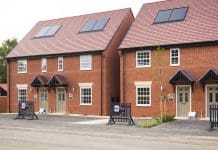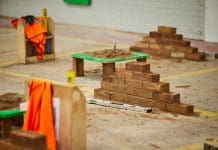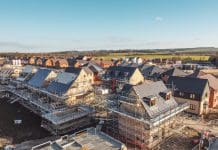Soft Landings enables closer collaboration between designers and builders from inception to completion – and beyond – to close the building performance gap. Sustainable building consultant Dr Michelle Agha-Hossein takes a look
Construction projects usually suffer from poor collaboration and communication between members of the project team. Designers and builders are normally confident that they can deliver a well-performing product, but they do not communicate well with each other and therefore problems such as unbuildable designs and value engineering lead to a gap between design and construction. On the other hand, the commissioning and handover period is normally squeezed due to time restrictions.
Therefore, although each component of the final product might work well in isolation, they do not always work well together and the final product as a whole may not work as originally intended. This could be described as ‘the performance gap’. To minimise this gap, as well as produce better collaboration between the project team, engineers and architects should give as much attention to their design outputs as they give to their design inputs.
Soft Landings is a building delivery process that runs through a project from inception to completion and beyond. The idea behind it is to enable designers and constructors to focus more on operational performance outcomes. This approach helps project teams to deliver buildings that achieve their success criteria and meet the needs of their occupants.
 Soft Landings also provides a mechanism for designers and constructors to remain involved with their projects beyond practical completion, which doesn’t happen on standard building projects. Its projects are subjected to an initial aftercare period (up to six weeks after occupancy) and an extended post-occupancy evaluation (POE) period (up to three years after completion). This can help the clients and their design teams to make more use of performance feedback to identify problems, if any, and solve them by fine-tuning and debugging systems. This enables the team to optimise the operational performance, provide a healthier and more comfortable environment for the occupants, and better inform their future projects. So, Soft Landings is an ‘evolution’ not a ‘revolution’.
Soft Landings also provides a mechanism for designers and constructors to remain involved with their projects beyond practical completion, which doesn’t happen on standard building projects. Its projects are subjected to an initial aftercare period (up to six weeks after occupancy) and an extended post-occupancy evaluation (POE) period (up to three years after completion). This can help the clients and their design teams to make more use of performance feedback to identify problems, if any, and solve them by fine-tuning and debugging systems. This enables the team to optimise the operational performance, provide a healthier and more comfortable environment for the occupants, and better inform their future projects. So, Soft Landings is an ‘evolution’ not a ‘revolution’.
It should be borne in mind that Soft Landings cannot solve all the problems. It provides a platform for the team to work closely together, take ownership of the project and eliminate the blame culture. However, for it to work, better planning and integrity in the project process is needed.
There are guides, such as those published by BSRIA, that can help the UK construction industry to better understand Soft Landings. We are witnessing that the industry is gradually getting familiar with the Soft Landings process, but there are some challenges. Adopting Soft Landings might be seen as an expensive process. The main challenge is to prove the cost benefit. Another challenge is to help the industry to fully understand how to implement Soft Landings.
Some organisations still believe that Soft Landings is just about handover and, consequently, they do not start Soft Landings-related activities early enough in their projects. One more challenge is how to prepare Soft Landings tender packages and how to include Soft Landings in project contracts. The main concern here is that if contractual linkage is introduced, the project team might not accept challenging targets. To overcome these challenges, more trainings and case studies are needed.
If you would like to know more, or would like to join BSRIA Soft Landings Network, please contact me on michelle.agha-hossein@bsria.co.uk.
Dr Michelle Agha-Hossein
Sustainable Building Consultant
BSRIA Sustainable Construction Group
Tel: +44 (0)1344 465 605
Michelle.Agha-Hossein@bsria.co.uk
Twitter: @BSRIALtd














